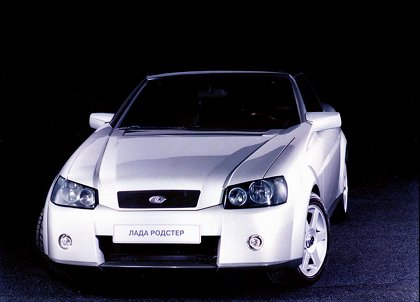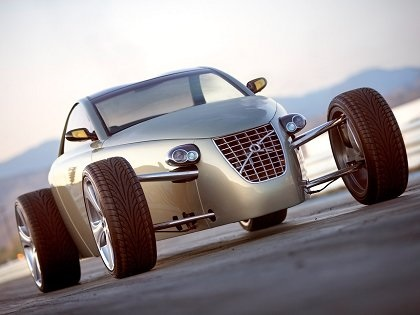2000 Lada Roadster Concept by Sbarro
- Story Cars

- Jan 24, 2024
- 2 min read
Crafted within a remarkable eight-month timeframe by a dedicated team led by Sergei Nuzhny, the Lada Roadster Concept by Sbarro emerged as a testament to enthusiasm for overcoming financial constraints and material shortages. Originating from the Swiss school of automotive design, known for its swift production of concept cars, the team's approach prioritized practical value for the enterprise and drew attention to the innovative transparent top design.
The concept utilized the outdated VAZ-1119 Kalina prototype as a base, with a focus on creating a compact roadster. Sergei Nuzhny, serving as the designer, collaborated with a close-knit team of three workers specializing in resin and metalwork. The roadster's development took place under the Sbarro method, avoiding the construction of a model and streamlining the process "on site" to save both time and money.
The layout of the roadster was meticulously planned, necessitating a 150 mm reduction in the base of the hatchback. The transformation from a conceptual idea to a tangible prototype involved real-time adjustments, with the instrument panel borrowed from the VAZ-1118 and various elements sourced from Alfa Romeo GTV and VW Golf IV.
Despite challenges, including the unconventional use of foam plastic impregnated with resin for the form-building surfaces, the Lada Roadster began taking shape. The workshop resembled a lively laboratory, with the team working on creating a visually appealing and cheerful machine.
Retaining features of the Kalina while infusing new design elements, the Lada Roadster showcased Mikhail Ponomarev's ability to offer something fresh yet associated with the base model. As the prototype neared completion for the Moscow Motor Show, the team felt a surge of attention from the management, leading to additional support.
Although the Lada Roadster remains a prototype, its creation demonstrated the feasibility of producing prototypes swiftly and cost-effectively. Equipped with a 2-liter VAZ-21203 engine boasting 106 hp, the roadster achieved acceleration to 100 km/h in 9 seconds and a top speed of 200 km/h. While certain challenges persisted, the project underscored the efficacy of the team's method, especially when faced with limited resources and time constraints.
Despite the likelihood that the Lada Roadster will remain a prototype, the project's success in showcasing swift and economical prototype development adds a noteworthy chapter to the automotive design narrative.
Source: "Need it?" Sergey Zhukov, Magazine "5 Wheel" 5-2002 Images: AVTOVAZ





































Comments